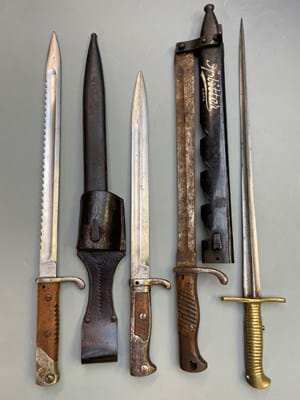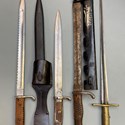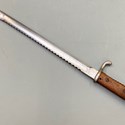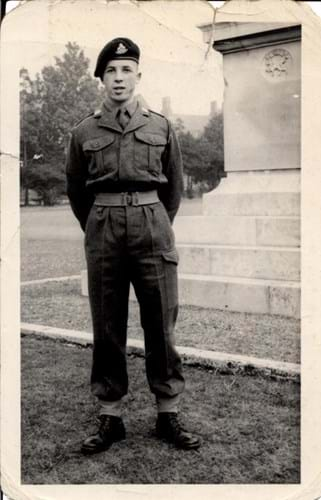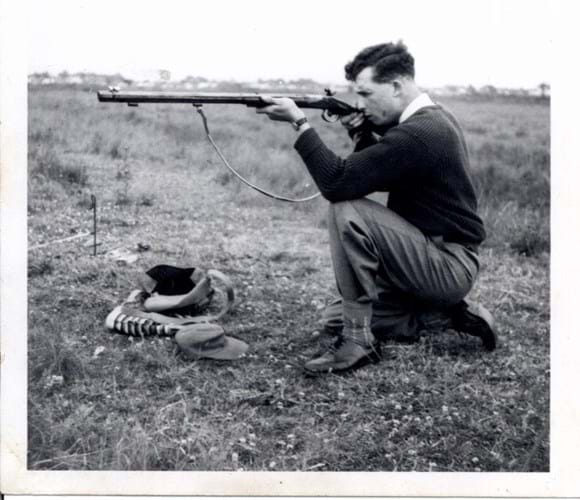It was during his early teens that Tom began his own collection of military memorabilia and a lifetime obsession with the American Civil War. He soon had a number of pen pals in both the US and Canada who helped him in his search for relics.
In 1955, at the age of 18, Mason enlisted into the South Staffordshire Regiment. He served all over the world, including Cyprus, Mombasa, Bahrain, Northern Ireland and Berlin. In 1956, during his time in Cyprus, he was seriously injured during active duty, but he survived and continued his military career until retiring with the rank of sergeant in 1977.
From early on, it was clear that bayonets held a special interest and his worldwide military career helped in sourcing rare items. The result was a huge collection of more than 700, which Stroud Auctions of Gloucestershire is now offering for sale on November 7.
The collection spans the globe with examples from Britain, Germany, Spain, France, Turkey, Austria, the US and others, with British and German examples forming the majority of the collection.
Included in the sale is a copy of The Bayonet Book, considered by many to be the definitive work. It has photographs of each type and some of these examples are part of the collection offered. An acknowledgment credits Sgt Mason as one of the collectors who helped to compile the book.
Saw backs and sword-like
The earliest British bayonets in the collection are socket bayonets ranging from early 19th century Brown Bess examples to one as late as 1876. Many of the bayonets tell a story, for example the Jacobs which fits a double-barrelled rifle and is more like a sword in appearance and size, quite different from what you may expect from a bayonet.
The Baker is an early non-socket type bayonet with a triangular blade - the example Stroud has is a slightly later 1825 pattern which was reduced in weight due to feedback from soldiers.
The Elcho bayonet with a saw back was short lived because of complaints from infantry soldiers of it being too brutal, despite the saw back being intended for sawing wood or similar but not really up to the job. There are also East India Company, Lancaster and Brunswick examples. Many are of interest due to the famous weapons they fit, including the Brown Bess, Brunswick, Lee Enfield and Lee Metford.
The most numerous in this collection are German bayonets – indeed, they invented the most bayonets of any nation. Before 1871 Germany was not unified, hence there are many small differences to distinguish where the bayonets are from.
During the First World War in order to meet the demand they produced Ersatz bayonets which were of a very functional and basic design, most being all steel, but some with features such as wooden grips (the sort of small difference that meant it formed part of the collection while still not being a duplicate).
One particularly unusual piece in the collection is a bayonet professionally converted to a wood splitter, one of only a handful known to exist. The design was imaginative, using the scabbard as the anvil.
Guns also on offer
Despite being predominantly a collection of bayonets there are also around 30 guns and other militaria, including a Manton side by side percussion gun, many Enfield rifles and more than 50 powder flasks.
The Sgt Mason collection totals over 800 lots and forms part of a militaria, medals and gun section which will involve more than 1500 lots.
Stroud Auctions said: "He was the happiest when he was with the ‘lads’ in the 1st Battalion South Staffordshire Regiment, especially when on manoeuvres with the Signal Platoon.
"He was always a great marksman, but as expected, he preferred muzzle loaders. He represented his Battalion/units on numerous occasions and his daughters have his winning medals from his success at Bisley. He was a keen member of ‘The Muzzle Loaders’ Association of Great Britain’ and shot regularly, usually using his favourite piece – an 1856 pattern Enfield rifle.
"Tom was also a member of the Southern Skirmish Association where he attained the rank of captain in the Confederate High Command and took part in several American Civil War re-enactment battles."


